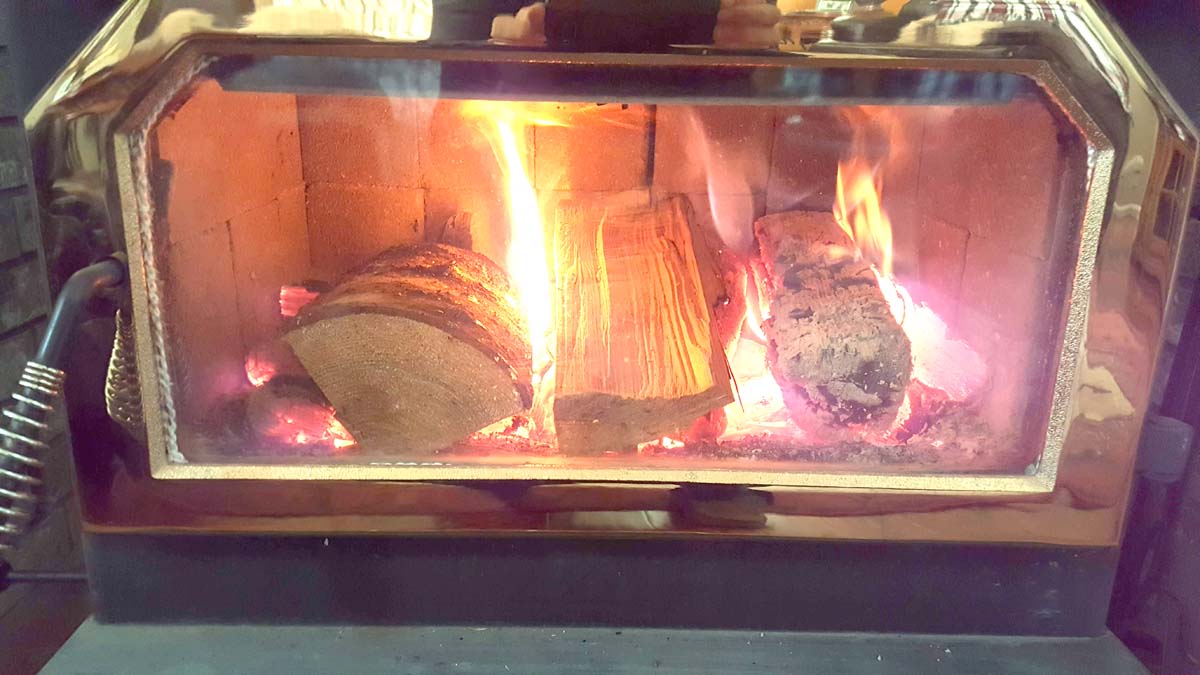NvrDwn
ArboristSite Operative
I have a big double door cast iron wood stove. It heats and cools quick. I was wondering if I put stone inside the stove, wouldn't that help retain heat so it isnt cold when I wake up?


By Stone, do you mean fire bricks that would be placed on the outer part of the inside firebox ?I have a big double door cast iron wood stove. It heats and cools quick. I was wondering if I put stone inside the stove, wouldn't that help retain heat so it isnt cold when I wake up?
I had a catalytic stove for a while. There was an air adjustment but also a secondary air intake that was not adjustable. Fill it up and most of the heat came from the secondary burn and the catalyst leaving a choice of harvesting charcoal or settling for periods of less heat as the charcoal slowly goes away. Rarely would it go out. It was not updraft with ash pan design.........ood will burn longer than 50 pounds. Not saying everyone should split their wood like tooth picks, and the type of wood makes a difference too.
First,of you stove. Rounds in your stove will burn slower than splits. i use a combination of both for overnite.
With stoves, especially cat stoves, splitting the wood small so you can pack it full can get longer burns. As an example, I can only get 5, 10-15 pound pieces through the door, for 50-75 pounds of wood in the stove, and there is a lot of dead space above the opening. If I split it smaller, I can get 20, 5-6 pound pieces packed in, for 100-120 pounds of wood. With regulated air flow, 100 pounds of wood will burn longer than 50 pounds.

it reminds me of my parents old FisherHere you go.
My old insert was deep, so I'd pack it solid, front to back like you have yours. With all Oak I'd get 12 hour burns. My buddy had a big Tulip Poplar fall across his back yard. I cut and split it for his shop stove, But, he said he would never use it all and it would go to waste, so I took it home. The following year it was dry as a bone and was great for starting fires. I tried packing the stove like always, and in 8-9 hours I had cold ashes. The type of wood definitley makes a difference in burn times. My old stove was made to get hot, then damp it down. I'm still learning how my new Jotul works. So, not knowing your stove, I can't advise on the best way to use it.Thanks for the super advice!
Everybody, I am burning mostly softwoods, and have always heard to burn hot so as to avoid the creosote issue, so do you think I'll be ok filling a stove in good condition full of fir and after it's really caught just shutting it down nearly all the way for the night?
I've been honestly afraid of literally filling my (new to me this year) woodstove. I am able to damp it down so far that it hardly has any flames, and the embers glow dark red rather than bright red.

it reminds me of my parents old Fisher
is that single wall pipe ?
does it have a damper in the pipe?
do you have a thermometer for the stove pipe ?
big wood on a good bed of coals and damper it down witht he door air controls and the chimney damper if it had one was generally how they got that type of stove to produce longer
I bet with that heat exchanger and blower small hot fires can really warm the house up fast thermal mass around the stove may help hold the heat in the room longer.
keeping a good flue temp while running that heat exchanger would be a concern I would be inspecting the chimney for any issues with creosote.
It looks like you have a reducer on the pipe coming of the to of the stove. yes/no? that may be the cause of it smoking when you damp it down. to your questin about bricks ,you may be able to place some on the sides but i don't how you would be able to keep them in placeYes, yes, no.
It works very well at warming the house quickly. When I first used it I got it to 92 in the house. Its 1800sqft. It's a very fine line that moves with the type of wood i use. I can fill it with wood get a good fire going then damp it way down but itll still get extremely hot, or, smoke will start coming out of the door. Sometimes i can get it just right and other times not so much.
Enter your email address to join: